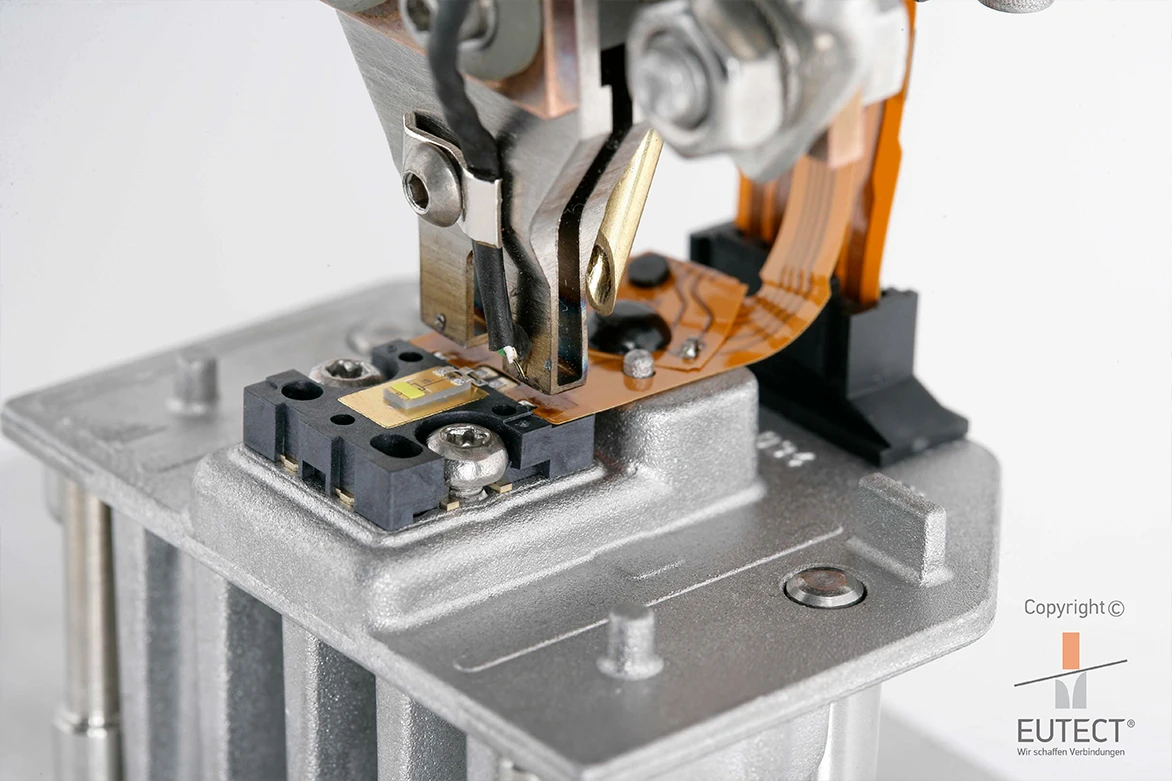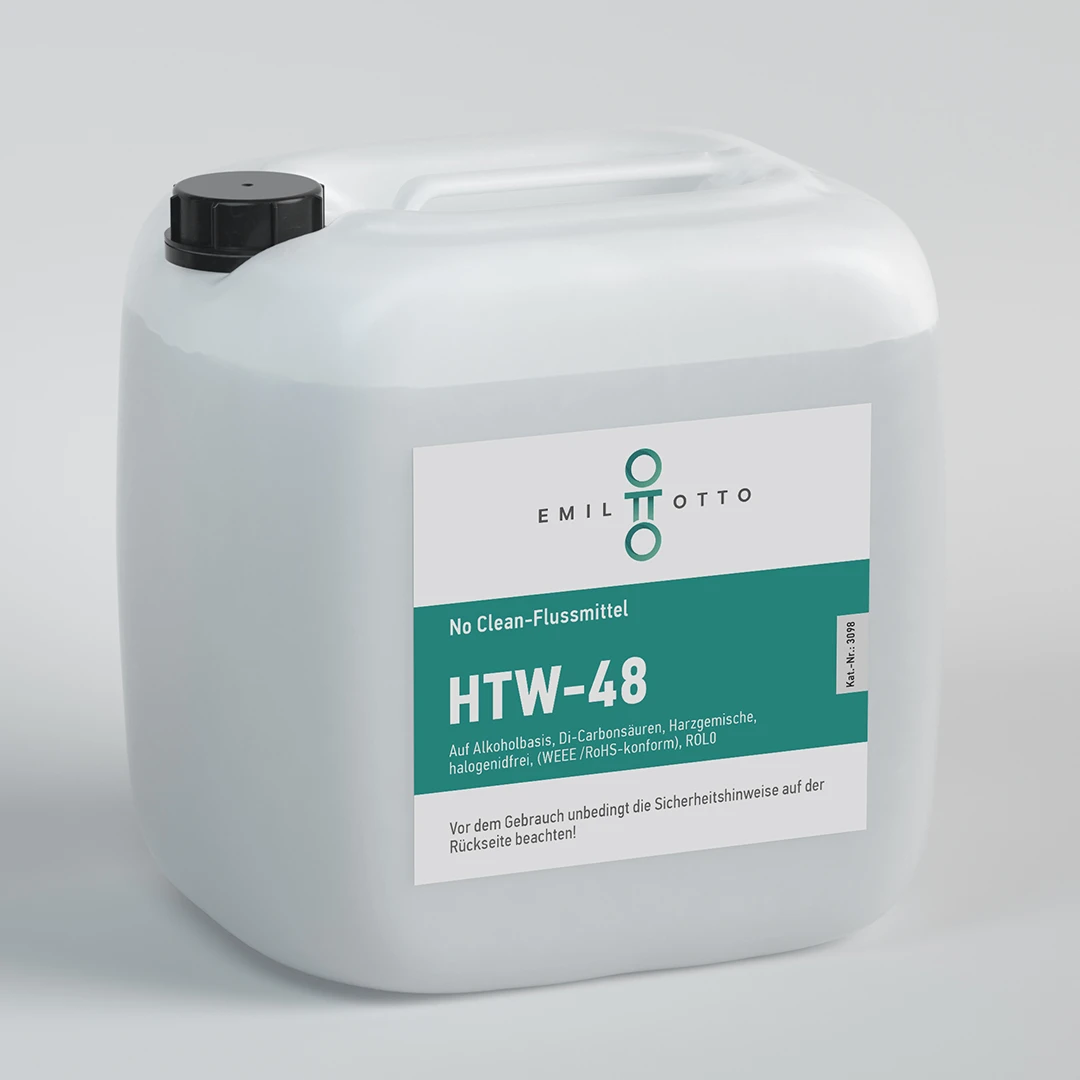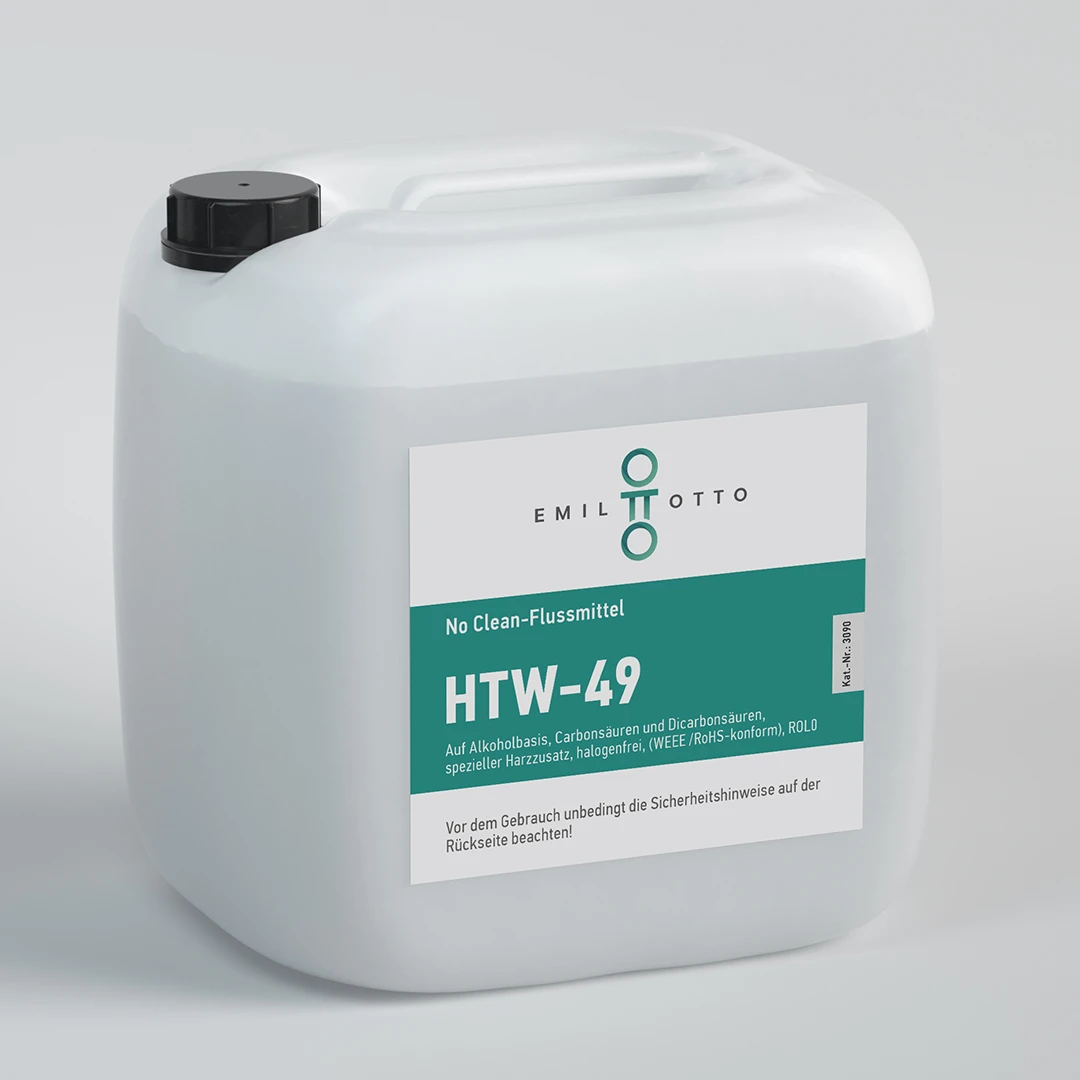The use of flux during thermode soldering removes oxide layers and impurities to enable optimum wetting of the solder. As the solder flows evenly, a stable connection is created. The flux
HTW-48
Dip tinning, selective and manual soldering processes, strand tinning
No Clean flux with halide-free activators (WEEE /RoHS compliant)
Type ISO-9454: 1131 DIN EN 61190-1-1 (according to J-STD 004) ROL0
HTW-49
Dip tinning, selective and manual soldering processes, strand tinning
No Clean flux with halide-free activators (WEEE /RoHS compliant)
Type ISO-9454: 1131 (1.1.3.A) DIN-EN 61190-1-1 (according to J-STD-004): ROL0
Especially for selective soldering processes and cable assembly
The flux
Suitable as flux gels for repair tasks on assembled printed circuit boards
Both fluxes are also available as gels for reworking, which are particularly suitable for repair work on assembled PCBs. In the past, it was often necessary to use fluxes for manual and repair soldering, which, however, use different activators. By using standardized activators, cross-reactions can be avoided, which can occur when using different activators from different products.
The new flux gels are based on the activator formulation of the fluxes
The flux that has been available on the market for a long time



